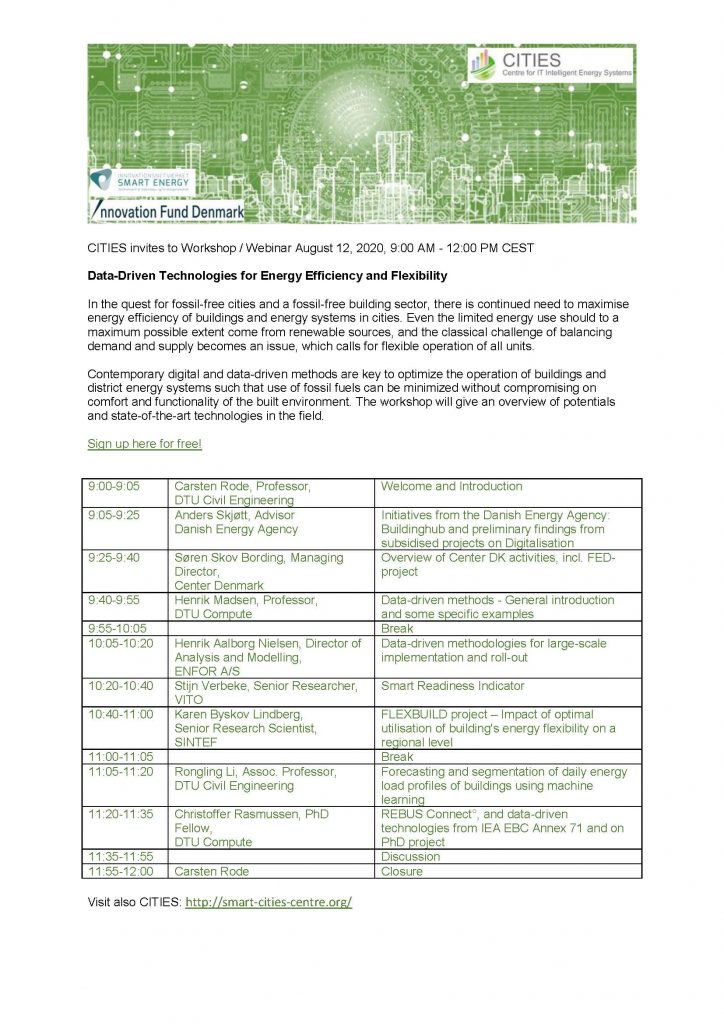Watch or rewatch CITIES webinar – August 12, 2020.
CITIES are pleased to announce that our partner – Innovationsnetværket Smart Energy – has made a great video from our webinar about digital and data-driven methods to optimize the operation of buildings and district energy systems.
Watch or rewatch CITIES webinar from August 12, 2020, where our speakers gave an overview of potentials and state-of-the-art technologies in the field.
We also share some of the presentations as PDF. See them below.
JOIN CITIES AGAIN! On 9-11. November 2020 CITIES hold our final conference. Please reserve the dates. Stay tuned and sign up, when we are ready with the program in a couple of weeks. It would be possible to follow our conference live on the internet.
Please share with your network.
PDF:
Henrik Madsen, Professor, DTU Compute: Data-driven methods – General introduction and some specific examples
Henrik Aalborg Nielsen, Director of Analysis and Modelling, ENFOR A/S: Data-driven methodologies for large-scale implementation and roll-out
VIDEO: Webinar Data-Driven Technologies for Energy Efficiency and Flexibility





